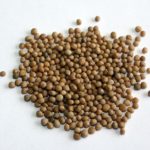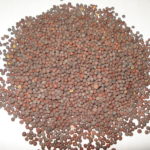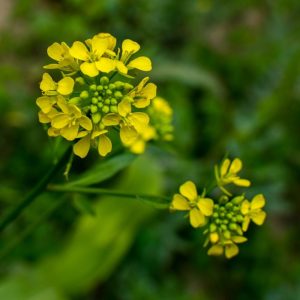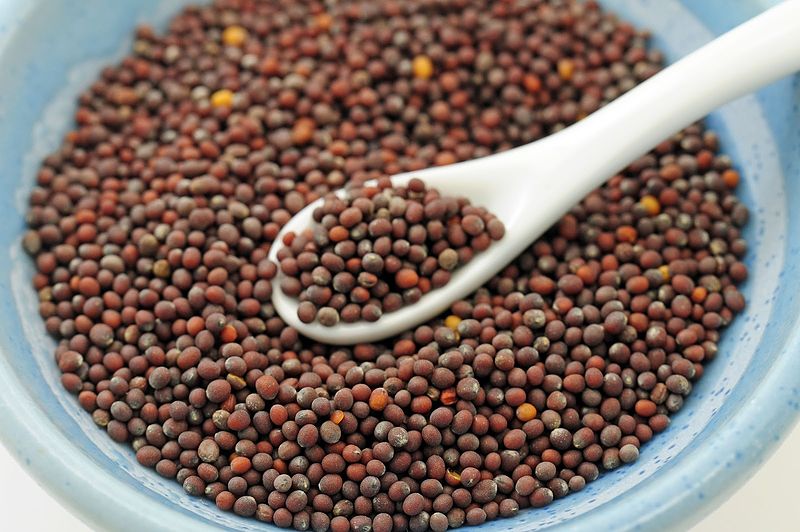The familiar condiment, mustard, is a combination of mustard seeds, water and an acid such as wine or vinegar. The seeds can come from three different types of mustard plants, all members of the brassica family which includes cabbages, cauliflower and broccoli.
 White mustard (Brassica hirta also called Sinapis alba) is the seed most often used in American mustards. It is an annual plant native to North Africa and the Middle East growing one to two feet tall. The seeds vary in color from yellow to beige or brown. The typical yellow color of American mustard results from the addition of turmeric or other food coloring to the condiment.
White mustard (Brassica hirta also called Sinapis alba) is the seed most often used in American mustards. It is an annual plant native to North Africa and the Middle East growing one to two feet tall. The seeds vary in color from yellow to beige or brown. The typical yellow color of American mustard results from the addition of turmeric or other food coloring to the condiment.
 Black mustard (Brassica nigra) is also an annual plant. Although it is native to southern Europe, it is used extensively in Indian cuisine, especially curry. The seeds are popped in hot oil or gee resulting in a nutty flavor. The plants grow two to six feet tall and the seeds are black or brown in color.
Black mustard (Brassica nigra) is also an annual plant. Although it is native to southern Europe, it is used extensively in Indian cuisine, especially curry. The seeds are popped in hot oil or gee resulting in a nutty flavor. The plants grow two to six feet tall and the seeds are black or brown in color.
 Brown mustard (Brassica juncea) is an annual native to the foothills of the Himalayas and is used in Nepalese, Punjabi and Pakistani cuisines. It is less spicy than black mustard but spicier than white mustard. The plants grow to four feet and have brown seeds.
Brown mustard (Brassica juncea) is an annual native to the foothills of the Himalayas and is used in Nepalese, Punjabi and Pakistani cuisines. It is less spicy than black mustard but spicier than white mustard. The plants grow to four feet and have brown seeds.
All three mustards are cool season plants. The optimal soil temperature to sow the seeds is 45⁰F. Lower soil temperatures result in longer germination times. Germination will not occur below 40⁰F. Direct sow the seeds in your garden ¼ to ½ inches deep. Germination should occur in four to seven days. In regions with milder climates, you can sow your seeds in the fall for germination in the spring.
 Flowers will start to appear 35 to 40 days after germination. The flowers last about week before they develop into seed pods over the following 35 to 45 days. The seeds are mature when the pods turn from green to brown or tan.
Flowers will start to appear 35 to 40 days after germination. The flowers last about week before they develop into seed pods over the following 35 to 45 days. The seeds are mature when the pods turn from green to brown or tan.
You want to harvest the pods before they are fully mature. Mature pods will shatter and spray their seeds in your garden similar to the way that dills and fennels shatter and spray their seeds.
The easiest way to harvest mustard seed is to pull up the entire plant and hang it upside down to dry in a paper bag with slits cut into it to promote air circulation. After the two weeks, the pods should be dry. Simply shake the bag and the seeds will fall out of the pods and drop to the bottom of the bag.
An alternative way to dry the seeds is to strip the individual pods from the plants and dry them in a single layer on a screen for about two weeks.
Store your dried mustard seeds in a tightly covered jar in a cool, dry place.

